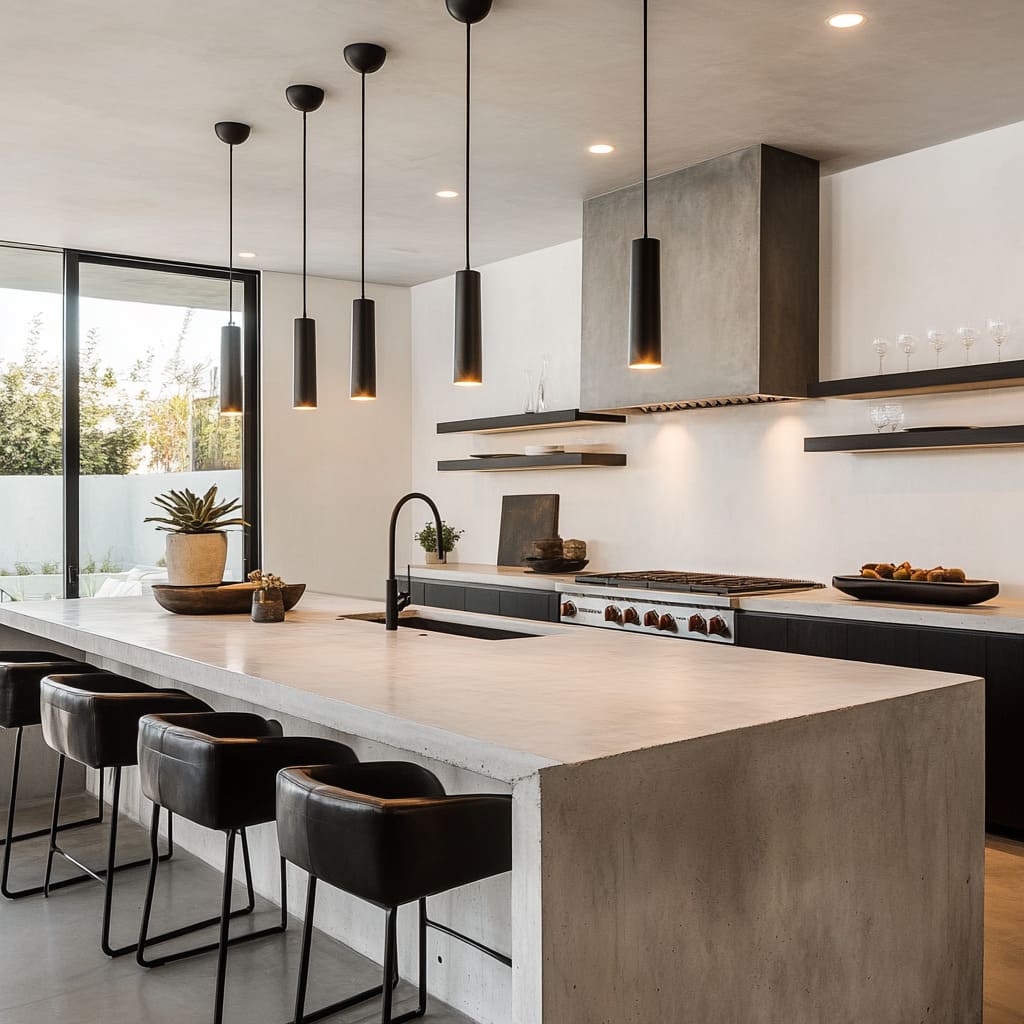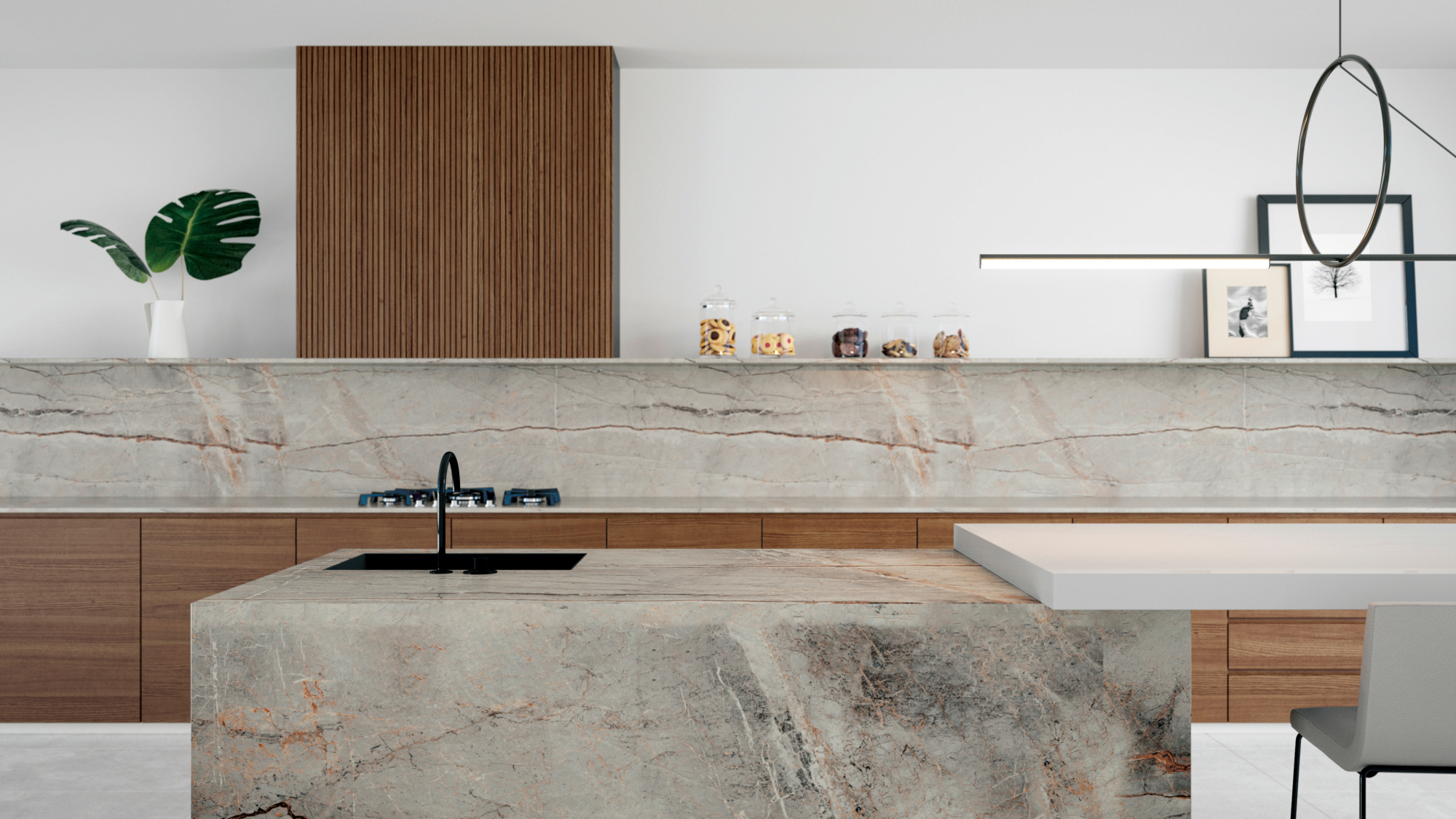categories
date posted
share
You May Also Like
- Quartz, Granite, or Marble? The Ultimate Guide to Choosing Your Kitchen Countertop
Let’s be honest—selecting a kitchen countertop can feel a little overwhelming. There are so many options out there (quartz, granite, marble… and that’s just the beginning), and each one comes with its own pros, cons, and personality.
As a designer, I’ve worked with everything from sleek porcelain slabs to warm butcher block surfaces, and I can tell you—there’s no one-size-fits-all answer. The right choice depends on your lifestyle, budget, and how much maintenance you’re willing to take on.
In this guide, we’ll take a look at some of the most popular countertop materials: Quartz Granite Marble Butcher Block Concrete Laminate Porcelain
And a few honorable mentions
Whether you’re planning a full kitchen renovation or just exploring your options, this breakdown will help you feel more confident about your decision—and hopefully even get you a little excited about it.
01. Quartz
Quartz countertops are engineered stone surfaces, made by combining around 90–95% crushed natural quartz with resins, polymers, and pigments. This creates a non-porous surface that’s consistent in color and texture, with incredible strength.
Unlike natural stones, quartz isn’t quarried in slabs—it’s man-made in factories, which allows for better control over color and pattern. It’s available in everything from soft marble-like veining to bold modern tones.
Pros:
✔ Low-maintenance (no sealing required)
✔ Stain-resistant and non-porous
✔ Wide variety of colors and patterns
Cons:
✘ Less heat-resistant than natural stone
✘ Can be more expensive than budget materials

02. Granite
Granite is a natural igneous rock, formed under the Earth’s surface from cooling magma. It’s mined in large blocks and cut into slabs, then polished and sealed for use in kitchens.
Because granite is a natural material, every slab is completely unique, featuring natural veining, mineral flecks, and color variations. It’s incredibly hard, durable, and heat-resistant—ideal for heavy-use kitchens.
Pros:
✔ Beautiful natural patterns
✔ Very strong and heat-resistant
✔ Long lifespan
Cons:
✘ Needs to be sealed to prevent staining
✘ Can chip at corners if not handled carefully

03. Marble
Marble is a metamorphic rock made from limestone that’s been subjected to heat and pressure over millions of years. It’s prized for its natural veining and timeless beauty, often associated with luxury interiors.
It’s softer and more porous than granite, which means it can scratch and stain more easily—but with proper care, it ages beautifully and adds a sophisticated charm.
Pros:
✔ Elegant, high-end appearance
✔ Naturally cool surface (great for baking)
✔ Unique, natural veining
Cons:
✘ Prone to staining and etching from acids
✘ Requires sealing and regular care
✘ Softer and more fragile than other stones

04. Butcher Block
Butcher block countertops are made by gluing together strips of hardwood, usually maple, oak, walnut, or birch. The result is a warm, textured surface that brings a natural feel into the kitchen.
These countertops are popular in farmhouse, Scandinavian, or mixed-material kitchens. They can be sanded and refinished over time, but they do require ongoing maintenance to protect from water damage and staining.
Pros:
✔ Warm, natural texture
✔ Can be sanded and refinished
✔ Often more affordable than stone
Cons:
✘ Requires sealing/oiling to protect against moisture
✘ Can scratch or dent
✘ Susceptible to water damage

05. Concrete
Concrete countertops are custom-poured using cement, aggregates, and pigments, often right on-site. They’re troweled and cured to a smooth finish, then sealed for protection.
Because they’re handcrafted, no two concrete countertops are the same. You can customize the color, texture, and even embed details like stones or metal trims. They’re especially popular in modern and industrial-style kitchens.
Pros:
✔ Fully customizable
✔ Durable and heat-resistant
✔ Unique, artisanal appearance
Cons:
✘ Prone to staining or hairline cracks without proper sealing
✘ Heavy—requires strong support
✘ Needs ongoing maintenance

06. Laminate
Laminate countertops are made by bonding layers of decorative paper and plastic resin to a particleboard or MDF (medium-density fiberboard) core. They’re one of the most budget-friendly options available.
Modern laminate has come a long way, with improved durability and more realistic textures that can mimic the look of marble, wood, or stone—without the same cost or upkeep.
Pros:
✔ Very affordable
✔ Wide range of styles and colors
✔ Easy to clean
Cons:
✘ Not heat- or scratch-resistant
✘ Damage is not repairable
✘ Lower long-term durability

07. Porcelain
Porcelain countertops are made from refined clay that’s fired at extremely high temperatures, producing a dense, hard, and non-porous surface. Large porcelain slabs are printed with high-definition designs—often mimicking stone, wood, or concrete.
They’re ultra-thin yet strong, making them ideal for sleek, modern kitchens. Porcelain is also UV-resistant, making it suitable for outdoor kitchens.
Pros:
✔ Resistant to heat, stains, UV, and scratches
✔ Very low-maintenance
✔ Sleek, modern aesthetic
Cons:
✘ Can chip on corners if not handled carefully
✘ More limited in edge profiles
✘ May cost more than standard materials

08. Sintered Stone
Sintered stone is a high-performance material made by compressing natural minerals under heat and pressure—a process that mimics how stone forms in nature, but at a much faster pace and under controlled conditions.
It’s non-porous, resistant to extreme heat, scratches, stains, and UV exposure. It’s often used in high-end kitchens and bathrooms and is ideal for modern spaces that demand durability without compromising on style.
Pros:
✔ Incredibly durable and long-lasting
✔ No sealing needed
✔ Heat-, stain-, and UV-resistant
Cons:
✘ Can be expensive
✘ Limited availability and installer expertise
✘ May have fewer edge design options

Choosing a countertop can feel overwhelming, but here’s the truth: it all comes down to your day-to-day life. Are you constantly cooking, entertaining, and cleaning up messes? Or are you looking for a focal point that ties the whole room together? The good news is, there’s no wrong answer—just the right fit for you.


